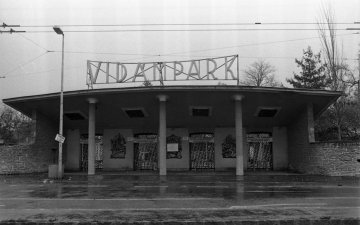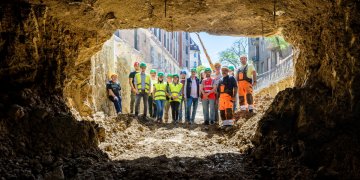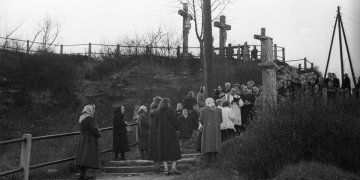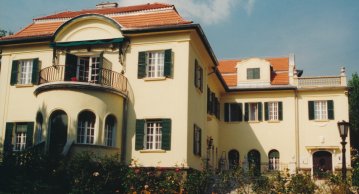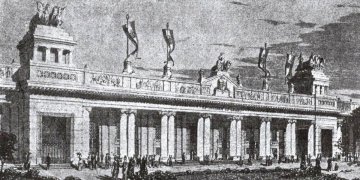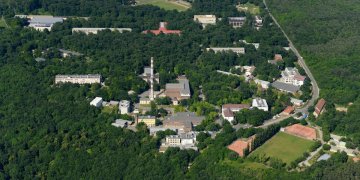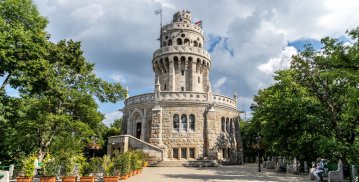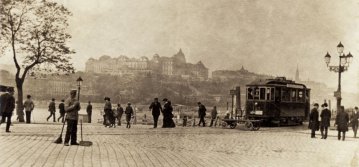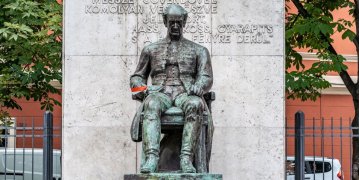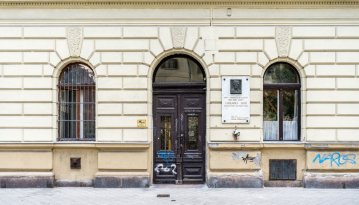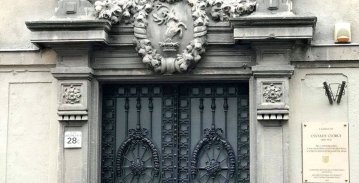
Földváry Gergely
Cikkek
Once upon a time there was the Amusement Park - In the early 1800s, the former 'Vurstli' settled in the Városliget
July 4, 2021 at 9:30 AM
The history of the former Amusement Park of Budapest dates back a long time: performers in Városliget entertained the population of the capital since the beginning of the 19th century. The Vurstli, the Ős-Budavár, the Angol Park, and from 1950 the Amusement Park of Budapest were all created to entertain people. The Amusement Park, which has had several golden ages, was finally closed in 2013, and in its place the Holnemvolt Vár can now be seen and the Pannon Park is being built, which will perhaps restore the atmosphere of the former entertainment district.
A decades-old plan comes to life – A tunnel connecting Széll Kálmán Square with Városmajor
June 25, 2021 at 9:00 AM
The construction of the new pedestrian crossing connecting Széll Kálmán Square with the Postapalota (Postal Palace) and Városmajor started last autumn, the two ends of which met under Várfok Street almost a month ago. The tunnel, which is expected to be completed by the end of the year, will not only provide an unobstructed passage for pedestrians and cyclists in the area to Városmajor but will also create a new entrance to the former Postapalota, also known as the Buda Palace.
One of the oldest ways of the cross in Budapest – The Kiscell Calvary is over 200 years old
April 3, 2021 at 11:00 AM
During the Easter period, people used to visit many calvaries, i.e. Ways of The Cross, in Buda and Pest. One of the oldest calvaries in the city, built 200 years ago and starting next to the Kiscelli Museum, is still one of the most visited Ways of The Cross in Budapest today. Even in 1956, the year of the revolution plenty of people walked the Way, as can be seen in a photo from 65 years ago.
An unexpected safe haven – Actress Gizi Bajor sheltered the hunted during the terrors of World War II
February 12, 2021 at 7:00 PM
The outstanding Hungarian actress, Kossuth prize-winner Gizi Bajor died seventy years ago. Her name is known by everyone that is even slightly interested in Hungarian theatre. What is less known is that her villa was a safe haven in 1944 and 1945, where she sheltered, among others, Jews and famous writers in hiding. Since her death, the villa on Stromfeld Aurél Road in the 12th District has preserved her memory as the Gizi Bajor Museum.
Budapest, the 1920 Olympics and the storms of history
November 28, 2020 at 9:00 AM
Hungarian athletes and sports fans have long been preoccupied with the question of when Budapest will host the Olympic Games. Budapest has applied several times and even won the right to host the 1920 Olympics 100 years ago. Many plans for the various buildings were drawn up but World War I pushed history in a different direction. In the centenary of this failed bid, join PestBuda in a glace through the plans, and what was realised of them.
Founded 70 years ago the KFKI served as a meeting place for Nobel laureates
October 8, 2020 at 2:00 PM
The Central Physics Research Institute, KFKI was established in Csillebérc seventy years ago. Near Normafa the institution quickly became a central location of scientific and academic life in Hungary and was visited by several Nobel Prize-winning researchers. The first nuclear reactor in Hungary, which is still operational, was built here, and the Pille radiation dose meter was also developed on the campus. Scientists awarded by NASA have also worked within its walls. Divided into several divisions after the end of socialism in Hungary, Csillebérc still houses committed researchers.
Queen Consort Elizabeth and the most beautiful lookout tower in Budapest
September 8, 2020 at 9:00 AM
The Elizabeth Lookout Tower atop János Hill in Budapest was opened with much ceremony 110 years ago. The tiered, cylindrical tower of snow-white limestone has since then become an unmatched staple of the Buda Hills, as it is visible from large swathes of the city. The present form of the lookout tower should be attributed to Frigyes Schulek. To honour the tower's anniversary, we have collected various images and stories from its past.
Clean Budapest – The city has been cleaned regularly for 125 years
August 28, 2020 at 9:00 AM
The inhabitants of Pest and Buda used to carry garbage to rubbish pits or simply drop it on the banks of the Danube. Because of this, there was often an unbearable stench in the two cities. All this changed radically 125 years ago when an office was established in the capital to clean the roads of Budapest and collect rubbish.
Brides, stuntmen and sandbags have travelled on the Chairlift – Budapest's most unique means of public transport
August 19, 2020 at 10:00 AM
The János Hill chairlift is one of Budapest's most interesting means of transport and has been serving the city since 19 August 1970. There are several interesting facts connected to it. Few know that the first “passengers” on the chair lift were sandbags. A wedding was once held up in the air, and the Trapper jeans brand also shot a commercial on the lift, with a stuntman travelling above the city standing up.
In the footsteps of Kölcsey – The poet who wrote the national anthem of Hungary was born 230 years ago
August 8, 2020 at 4:00 PM
Ferenc Kölcsey, born 230 years ago, was one of the greatest figures of Hungarian literature and public life in the Reform Period. His poem, Himnusz ('hymn'), which became the Hungarian national anthem, elevated him among the immortals of Hungarian culture. Despite this, his memory was not marked in Budapest by any public statue or plaque for a long time. Pestbuda examines the current memorial to the great poet in Budapest.
Jenő Cholnoky, one of the greatest Hungarian geographers, born 150 years ago
July 23, 2020 at 9:00 AM
Every day we walk past buildings whose past we know nothing about. The block of flats delimited by 29 Rákóczi Road - 1 Gyulai Pál Street - 4 Stáhly Street are similar. Today Pestbuda the site because the famous geographer Jenő Cholnoky was born 150 years ago and 100 years ago, in 1920, he moved here. His work is immense, yet he is mostly associated with the study of China and Lake Balaton. Look at his connections in Budapest with Pestbuda.
The Székely national anthem was first played in Budapest – Memorial plaque unveiled on the lyricist's home
July 19, 2020 at 3:00 PM
While many Hungarians know the lyrics to the Székely national anthem, while the work written soon after the Treaty of Trianon was signed quickly became symbolic of Hungarian unity, few know the name of the writer who originally wrote the lyrics: György Csanády. To honour the writer's memory, born 125 years ago, a memorial plaque has been unveiled on the 12th-district house he lived in.

